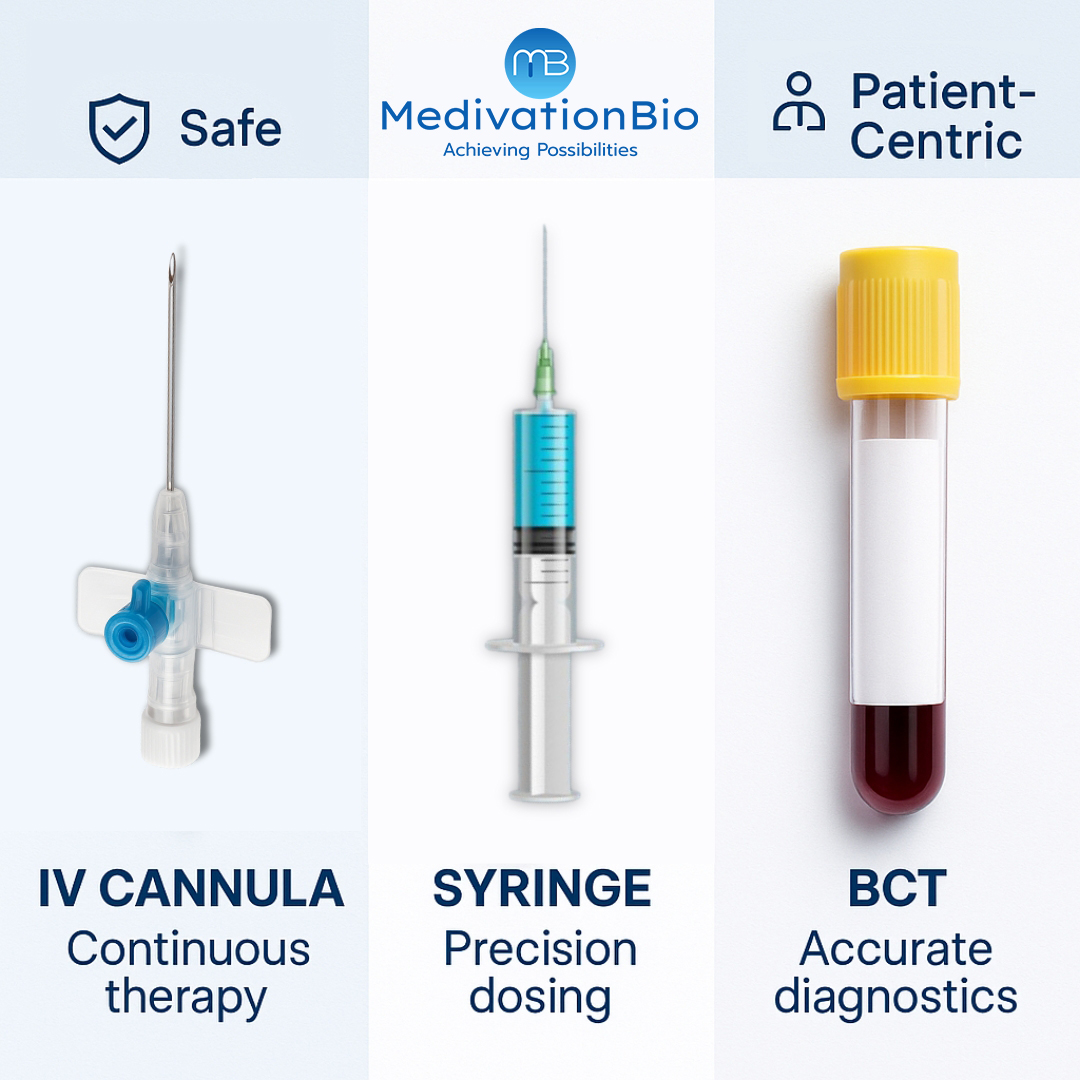
The Evolution of Infusion Therapy: From Glass Needles to Modern IV Cannulas
Infusion therapy, the process of delivering fluids, medications, or nutrients directly into the bloodstream has been a cornerstone of healthcare for over a century. What began as rudimentary attempts with reusable glass needles has evolved into a sophisticated system built around precision, patient comfort, and safety.
Today’s infusion therapy would be unrecognizable to practitioners of the past, yet its core purpose remains the same: to ensure that every drop counts.
From Glass Needles to Disposable Devices
In the early 20th century, infusion therapy relied on glass and metal syringes, which required sterilization after every use. While innovative for their time, they posed challenges: fragility, risk of contamination, and patient discomfort. Infection control was a persistent concern, with healthcare providers relying on boiling or chemical solutions to sterilize equipment.
The introduction of plastic disposables in the 1950s and 60s revolutionized practice. Single-use syringes and cannulas significantly reduced cross-contamination risks and improved accessibility, allowing infusion therapy to become safer and more widely adopted.
The Rise of Intravenous Cannulas
As medical science advanced, the need for a reliable, indwelling device to maintain venous access became clear. This gave rise to the intravenous (IV) cannula, designed to remain in the vein for extended periods, minimizing repeated punctures while allowing continuous infusion.
Over time, cannula design advanced from simple tubes to highly engineered devices capable of balancing flow rate, durability, and patient comfort. Innovations like polyurethane and PTFE materials, color-coded hubs, and precision engineering have turned the IV cannula into a vital partner in both routine and critical care.
Safety at the Forefront
One of the most important milestones in infusion therapy was the shift toward safety-focused designs. Needlestick injuries and hospital-acquired infections (HAIs) remain global concerns. According to the World Health Organization (WHO), millions of healthcare workers face exposure risks each year, often from sharp devices.
Modern IV cannulas address these risks through:
-
Safety-lock mechanisms that reduce accidental exposure.
-
Kink-resistant tubing that ensures continuous flow.
-
Sterile, single-use packaging that guarantees infection control from the outset.
This evolution reflects not only technological progress but also the growing recognition that protecting providers is as critical as caring for patients.
Biocompatibility and Comfort: A Patient-Centric Shift
Another key turning point in infusion therapy has been the emphasis on biocompatibility. Unlike rigid devices of the past, today’s cannulas are designed to adapt to the vein, soften at body temperature, and reduce irritation. For patients undergoing long-term treatments like- chemotherapy, antibiotics, or hydration, this translates to fewer complications and a better overall experience.
Gauge variety also plays a role in comfort and precision:
-
Large gauges (14G–16G): Support trauma and surgical emergencies.
-
Medium gauges (18G–20G): Balance efficiency with comfort for routine infusions.
-
Small gauges (22G–24G): Tailored for pediatric and geriatric patients with fragile veins.
Each advancement reflects an effort to make therapy not only effective but also tolerable for those receiving it.
Infusion Therapy in Today’s Hospitals
In modern hospitals, IV cannulas are everywhere from emergency rooms to intensive care units. They are used for:
-
Rapid fluid resuscitation in trauma cases.
-
Blood transfusions during surgeries.
-
Continuous medication in critical care.
-
Hydration and nutritional support for long-term patients.
Their ubiquity underscores their importance: without reliable venous access, much of contemporary medicine would be impossible.
Aligning Innovation With Care
Manufacturers today, including MedivationBio, are pushing infusion therapy forward by focusing on biocompatible materials, kink-resistant designs, and a wide range of gauges that meet the diverse needs of hospitals. By combining these innovations with global sterility standards, such solutions ensure that infusion therapy remains safe, precise, and patient-friendly whether in critical trauma care, general wards, or pediatric units.
Final Thoughts
The story of infusion therapy is one of transformation, an evolution from fragile glass needles to sophisticated cannulas that safeguard lives every day. It highlights how small devices can bring about big changes in healthcare, improving outcomes for patients and confidence for clinicians.
As hospitals and care providers look to the future, the humble IV cannula remains central to the conversation quietly enabling the flow of life-saving therapies, with precision in every drop.
